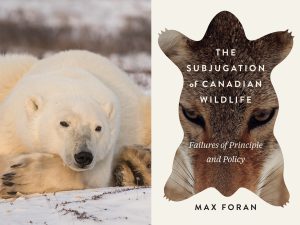Most of us will probably never get the chance to wake up in Fort Conger, on the northeastern corner of Ellesmere Island, and see with our own eyes what Peter Dawson has seen.
“It was very powerful to be there,” says Dawson, a University of Calgary archeologist who in 2010 spent 10 days at Fort Conger, a site that played a key role in historic polar expeditions of the late 19th and early 20th century. “To get out of your tent every morning, look across Discovery Harbour and know that the view was practically unchanged from what Robert Peary [putative discoverer of the North Pole in 1909] would have seen was very powerful.”
But Dawson wasn’t at Fort Conger on a camping trip. He was there to try and digitally preserve it using a terrestrial laser scanner to make a 3D model of the area. “Climate change and human activity is having an impact on sites associated with what’s often called the heroic age of polar exploration,” he says. “There are a whole range of processes affecting these sites and indigenous archeological sites in coastal areas, including thawing permafrost, erosion and bio-fungal growth caused by the warming micro-environments in wooden structures such as the huts Peary built.”
Now located within Quttinirpaaq National Park, Fort Conger had been used as a base for polar exploration and science as early as 1875, when the British Arctic Expedition’s HMS Discovery overwintered in the harbour that now bears its name. Members of the disastrous Lady Franklin Bay Expedition of 1881-1884 also overwintered in the area, as did Robert Peary, who made three separate attempts on the North Pole from Fort Conger, in 1899, 1905 and 1908. The fort was also where Western and indigenous knowledge met, mixed and complemented one another (largely through Peary employing Inughuit people from Greenland to help him during his attempts to reach the pole).
Dawson says that a lot of people don’t realize that polar heritage sites such as Fort Conger even exist, and notes that organizations such as Parks Canada often rely on visitor experience to communicate why these sites are significant.
“It’s difficult to create those experiences when sites are so remote,” he says. “ I’d bet that more people have stood on the summit of Mount Everest than been to Fort Conger. With laser scanning, you can use the date to create 3D models of the site.”
The 3D scanners, which create a very dense cloud of laser points that define the shape of an object and the surrounding terrain in an extremely precise way, are incredibly powerful. During an earlier project in the Western Arctic, for example, the scanners captured parts of the clouds of mosquitos hovering over an archeological site. “When we looked at the data and zoomed in, we saw the odd wing or leg or antennae,” says Dawson.
The data Dawson and his colleagues collected from Fort Conger was donated to CyArk, a non-profit organization dedicated to preserving heritage at risk throughout the world using 3D laser scanning and other kinds of reality-capture technologies. Some of Dawson’s 3D-scanning work can also be seen on the Fort Conger website, but a more complete visual story of the site will be available in spring 2016, when the Virtual Museum of Canada unveils its Fort Conger exhibit, a project that Dawson helped create.
“We’ve used the laser scanner to reconstruct the site as it would have appeared at the time it was occupied during different times in its history,” he says. “The process was quite fascinating, in that we had to construct various buildings stick by stick, as they would have at Fort Conger, only in virtual reality. For instance, people will be able to virtually explore the Lady Franklin Bay Expedition house, and we’ve created virtual models of some of the instruments expedition members used, along with games based on the science they did. It’s a powerful tool for raising awareness of the existence of these sites and of how they important they are in the history of the Arctic.”
Dawson is currently trying to raise funds to return to Fort Conger and complete a second 3D scan of the site.
“By rescanning the site and comparing the data captured in 2010 to data from a future laser scanning survey, we will be able to determine exactly how active threats like thawing permafrost, erosion and human visitation are affecting polar heritage sites such Fort Conger,” he says. “No one has ever really attempted anything quite like this, but our team believes that developing robust site monitoring programs based on laser scanning could greatly assist in the preservation and protection of polar heritage sites, so that they will be around for generations to come.”






